8 ways to improve bathroom ventilation, reduce mold and boost air quality with tips from construction and ventilation pros
Bathroom ventilation is more vital than you may realize
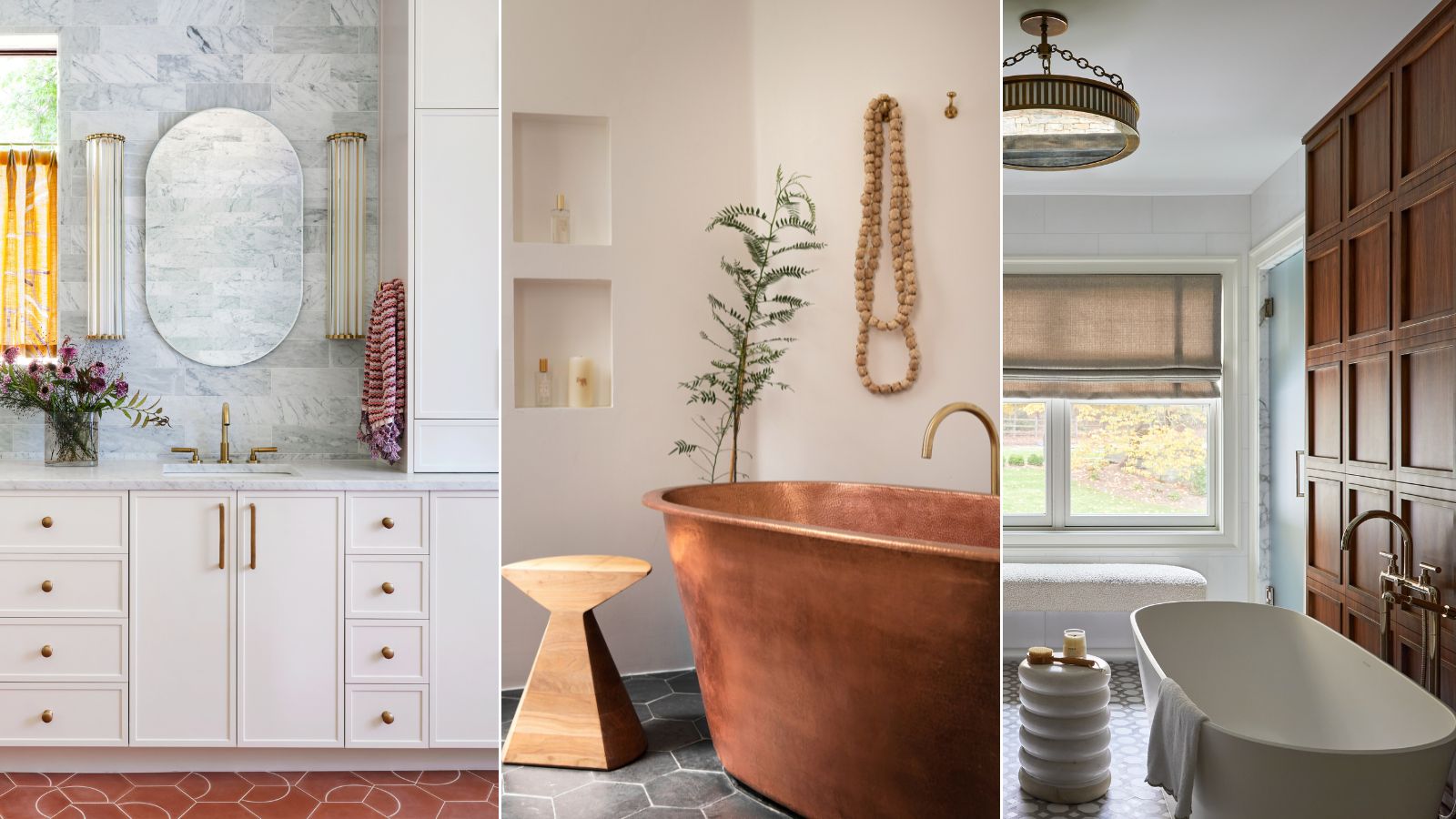

Bathroom ventilation underpins the health of this space. Without good ventilation, you may encounter mold, mildew and deterioration of not just your decor, for instance peeling wallpaper, but the structure of the room and beyond, including walls, roofing and floors.
We spoke to ventilation, remodeling and construction experts for eight ways to improve ventilation in your bathroom, with tips for a new bathroom build, existing adaptations, and additional add-ons.
Improving ventilation in your home, especially in rooms prone to damp such as a bathroom, helps ensure the structural integrity of your space as well as the health of all who live there. Our expert-led guide dives in, bringing advice ranging from smaller ventilation improvement hacks to more costly but vital works.
8 ways the pros improve bathroom ventilation
1. Use an air circulator
I had never heard of an air circulator before talking with Jessica Lauren, construction contractor and real-estate investor at Fire Damaged House Aid. This item looks a bit like a fan but helps to remove excess moisture from the air in your bathroom, preventing mold.
'I currently use a plastic Vornado Air Circulator in one bathroom in my house after showers during the winter,' says Lauren. 'It’s a quick way to remove the moisture or excess heat from the bathroom, and send it throughout the house during colder months.'
Switching on an air circulator is a simple addition you could add to your post-shower routine to make cleaning quick and easy in the bathroom in terms of preventing mold, too.
The cost of air circulators can vary depending on the size and energy efficiency rating of the model. However, on average, most will fall between $40 and $200.
2. Add a window or skylight
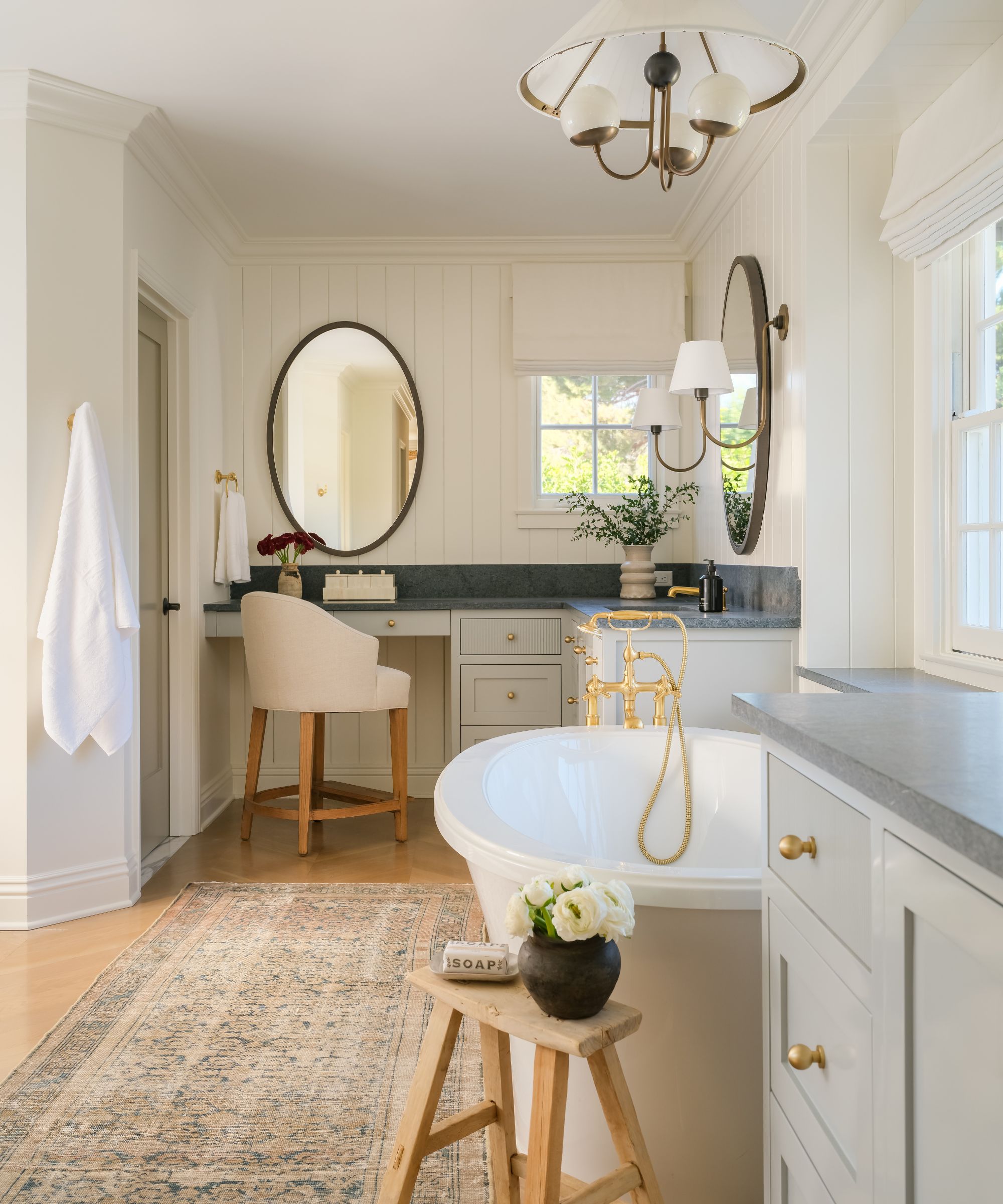
Multi-aspect bathrooms have brilliant ventilation potential
If your bathroom has no windows, damaged windows or a very small one, this may be the main culprit of your ventilation problem. There's no easier way to let fresh air flow through your bathroom than to crack open a window or two. But to do this effectively a homeowner must know when to repair a window and when it is time to replace it, as well as if more windows are required in their space.
Tony Virgilio of VENTS-US, says, 'If you’re up for a bit of a project, adding a window or skylight can work wonders to improve natural ventilation in your bathroom. They're great at pushing out humidity, too. It might be a bigger investment, but the fresh air is worth it. Just keep that window clean and make sure it opens smoothly.'
This includes taking a moment to wipe condensation off of your window that will gather after enjoying a warm bath or shower. 'In cold weather, opening a window means instant condensation on the window and around the frame,' says Lauren. If left unattended, it can also cause mold.
Prices will largely vary depending on window sizes, materials (such as the quality of the glass), and the difficulty of the installation, but you will be looking at spending a minimum of $700 to add this to your bathroom.
3. Install extractor fans
Bathroom extractor fans (also known as exhaust fans) extract air from your bathroom and expel it outside. This leaves room for fresh air to make its way into the space.
'Some houses have circulation vents, not extracting fans,' says Lauren. 'Replacing these vents with fans helps to reduce moisture, but you’ll need to make sure these are vented to the OUTSIDE of the house.'
Virgilio adds, 'An exhaust fan is your best friend when it comes to battling moisture. It pulls steam and humidity out of the air, keeping your bathroom dry and mold-free. Pick a fan that suits your bathroom size, and make sure it’s vented outside, not into your attic. And don't forget to clean the fan’s filter regularly!'
Failing to clean your bathroom fans not only impacts the effectiveness of your ventilation, but it could also become a fire hazard. Ask a professional to install this into your bathroom to ensure it is done safely.
Virgilio recommends the Vents 125 LD Axial Extract Fan for homeowners who love a modern aesthetic but are searching for something at a more affordable price point. Although there are plenty of different models out there, typically falling under $300.
- Shop bathroom extractor fans at Lowe's
- Shop bathroom extractor fans at Amazon
- Shop bathroom extractor fans at The Home Depot
4. Keep a stand-alone fan in there
This isn't likely to solve all of your bathroom ventilation problems but it's a good start. You likely have a tabletop fan in your home pop it in the bathroom after your shower or bath.
'The least expensive way to improve ventilation is to use a stand-alone fan,' says Lauren. 'I owned a vintage 1930's home with beautiful bathroom tile, so I didn’t want to undertake any renovations that could damage the room. Instead, I bought a Vornado Air Circulator in a retro model.'
The VFAN Vintage Air Circulator is a gorgeous genuine re-issue of a past product, coming in white or green with gold accents. You definitely won't have to worry about leaving this out on display in the bathroom because it'll have people talking for only good reason.
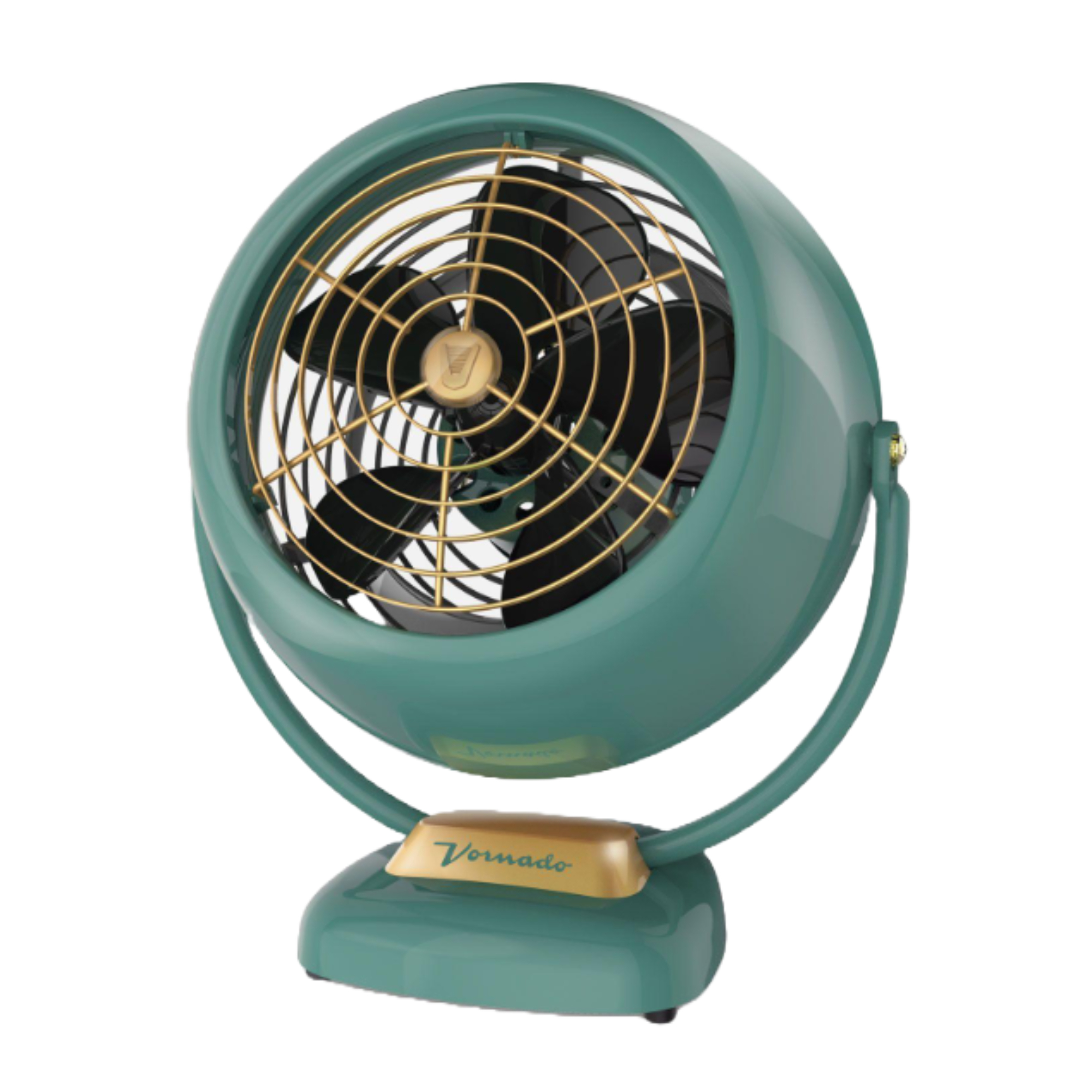
This durable metal fan is an authentic re-issue of a Vornado vintage model. With three different speeds and a full action pivot head, this fan is much more than aesthetically stunning.
5. Use a dehumidifier
Another easy addition to assist the ventilation in your bathroom is introducing one of the best dehumidifiers to the space. Though, it's important to bear in mind that it can't work wonders on its own.
Jessie Fadayel of Badeloft USA, a luxury bathroom company, says, 'These devices make fantastic ventilation solutions if your bathroom is small, dissipating moisture in a given room. But they are not designed for larger spaces, and if you have a medium bathroom, they should be combined with other forms of ventilation. Using a dehumidifier as your sole source of ventilation can be troublesome as it won’t dissipate moisture fast enough.'
According to a study on how much it costs to run a dehumidifier, running a standard model for costs seven cents an hour. Of course, if you're using a super powerful one or running it constantly on its highest setting, this cost will increase.
Investing in a reliable dehumidifier will cost between $50 and $150 depending on the size and brand.
'Remember to empty the water tank and clean the filter regularly to keep it running smoothly,' adds Virgilio.
Learn about the pros, cons and differences between air purifiers vs dehumidifiers.
6. Upgrade your extractor fan
There are many extractor fans out there that are likely far better than the standard model that came with your home. If this old fan is acting a bit worse for wear and you have a couple hundred dollars to spend on the job, why not consider investing in an upgrade?
'If your current fan isn’t cutting it, consider upgrading to a high-CFM (cubic feet per minute) model,' says Virgilio. 'These fans move more air, which means better ventilation and less chance of mold. Regular maintenance such as clearing the fan free of dust will keep it working like a charm.'
The Vents OV1 200 Axial Fan is currently on sale and its casing can be removed for easy cleaning. If you're wondering how often you should clean and replace a bathroom extractor fan, read up on our handy guide.
7. Remove clutter from your bathroom
Items squished together with little room for air to circulate between is the perfect breeding ground for bacteria and mold.
If you're yet to work your way through your bathroom decluttering checklist, it may be time to dive in. Figuring out what is truly necessary in your bathroom an removing the rest will help with ventilation by carving out more space where air can flow.
8. Add more doors
'Like the window, having large or multiple doors in your bathroom provides a natural means of ventilating the space,' says Fadayel. 'The essential aspect is to introduce air and dissipate moisture in the space, so if you can afford it in your layout, ensure your bathroom has multiple entryways for ventilation and safety.'
Combine some of these tips and tricks together and your bathroom shall become a well-ventilated haven for relaxation.
What to shop

This sleek dehumidifier uses smart technology to automatically shut off when it's filled to the brim with water. Compact and portable, you can move this to any space struggling with excess moisture.
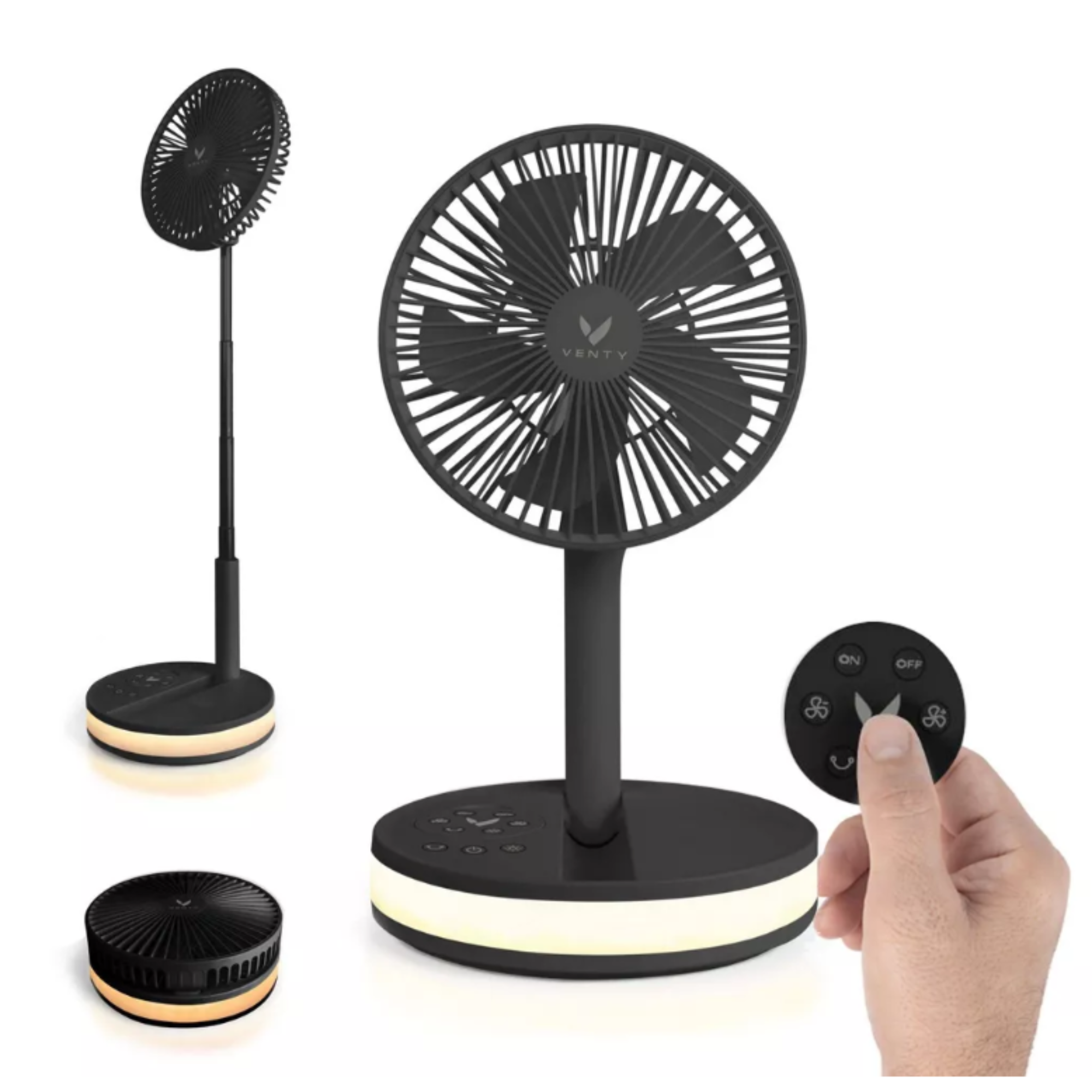
If you're short on space, this fan collapses to just three inches in width, making it easy to store away. The fan's base also doubles up as a phone charger and illuminates in three different colors if you like a soothing, moody bathtime.
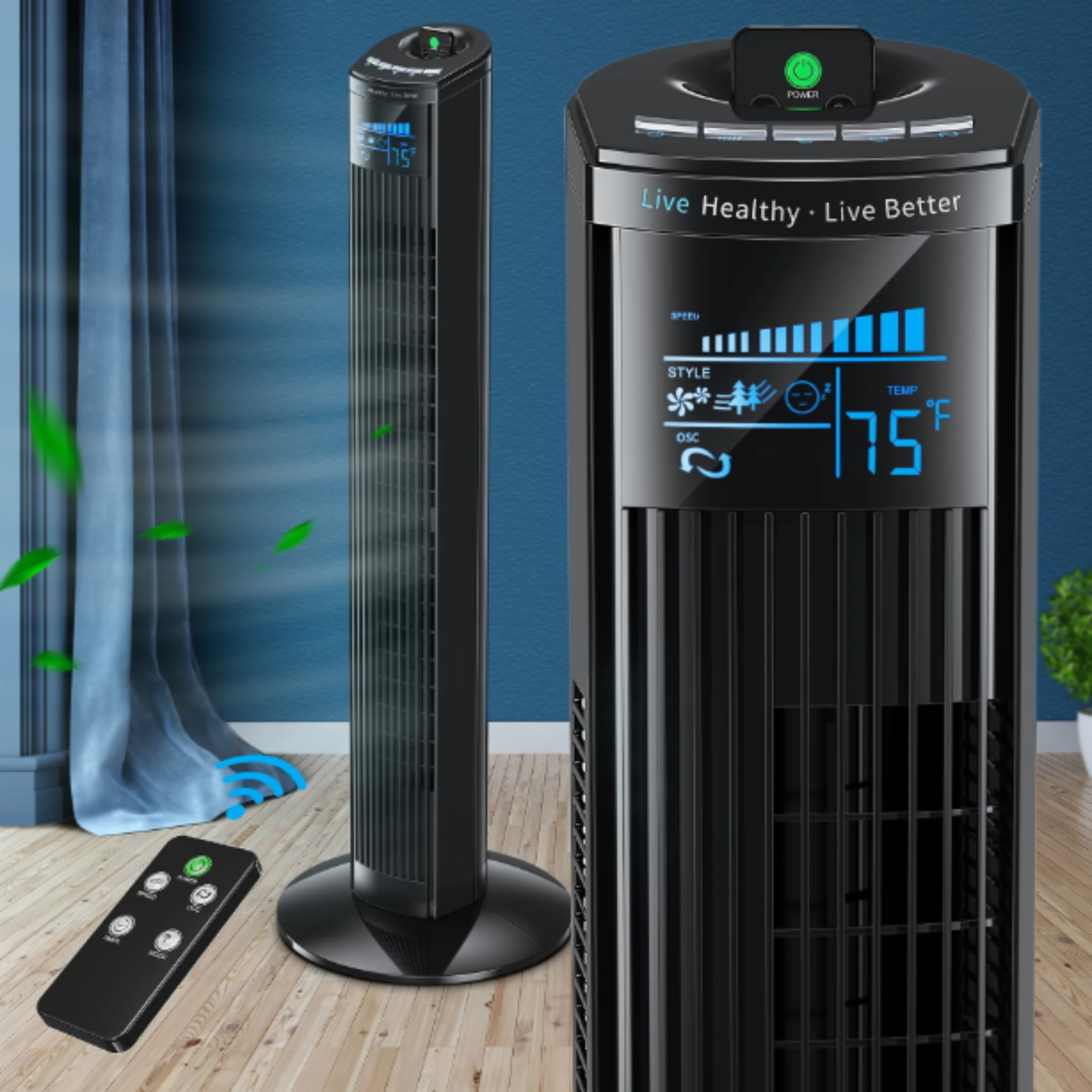
This tower fan is streamlined in style, making it easy to store. Its bladeless design additionally makes it safe to have around children and pets.
Now you know how to properly ventilate your bathroom, why not try to ventilate your attic? It's an often neglected space, prone to bad smells and damp, so it would definitely benefit from the extra attention.
Sign up to the Homes & Gardens newsletter
Design expertise in your inbox – from inspiring decorating ideas and beautiful celebrity homes to practical gardening advice and shopping round-ups.

Ciéra is a writer and regional laureate with particular passions for art, design, philosophy and poetry. As well as contributing to Livingetc, she's an Editorial Assistant for Design Anthology, and a contributing writer for Homes & Gardens and Apartment Therapy. Previous commendations of hers include being Highly Commended by The Royal Society of Literature and receiving a prestigious MA Magazine Journalism scholarship to City University, London.
-
 Experts say to only use homemade compost after testing it with this fail-safe method – they say it will guarantee healthy soil and support plant growth
Experts say to only use homemade compost after testing it with this fail-safe method – they say it will guarantee healthy soil and support plant growthSimply grab some fast-growing seeds and observe how they germinate in your compost
By Tenielle Jordison Published
-
 How safe are carpet deodorizers? As a seasoned vacuum tester, I urge you to try alternative methods
How safe are carpet deodorizers? As a seasoned vacuum tester, I urge you to try alternative methodsNatural cleaning is always the answer
By Dan Fauzi Published